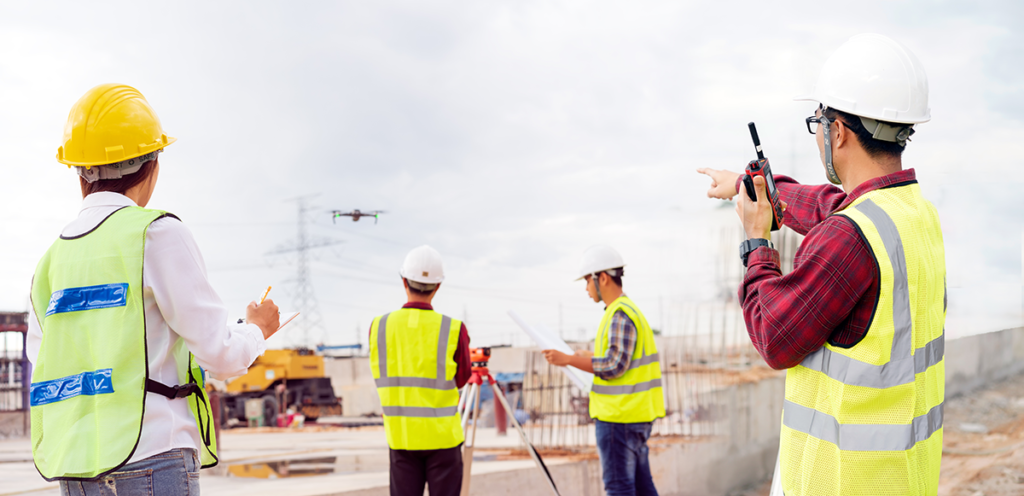Here’s what you need to know about the AUVSI TOP certification
There are numerous professional organizations available to drone operators, but few are as large and as established as the Association for Unmanned Vehicle Systems International (AUVSI).
This nonprofit organization works for the advancement of unmanned systems and robotics through various programs and hosted events.
AUVSI’s Trusted Operator Program (TOP) is an industry-recognized program for individuals and organizations. If you are not familiar with TOP, it is worth learning more about it, as it can enhance your organization’s (and your own) professional appearance.
The Part 107 license is a good start, but TOP is designed to further distinguish you and your pilots as safe, reliable, and professional.
What is TOP?
Several years ago, the FAA recognized a need for establishing rules and regulations surrounding the operation of drones for commercial applications.
In June 2016, the Part 107 sUAS license program became active. The program’s purpose was to regulate drone operations and provide access for people to tap into “the limitless possibilities unmanned aircraft offer.”
Earning an sUAS license is a great start, but it is by no means a robust certification. If we look at the fundamental safety standards and practices established in the Part 107 program as if they are the foundation of a house, TOP can be seen as the rest of the building.
TOP was designed by AUVSI members who worked with the association’s Remote Pilots Council to develop the certification’s framework and guidelines. The elements of TOP focus on safety culture, best practices, airmanship, human performance, code of ethics, automation awareness, risk management, and non-technical skills.
Pilots and organizations who have participated in the program show improvements in safety, trust, risk management, professionalism, and reliability.
Some important things to remember about TOP are that it is specifically for professional pilots. Drone hobbyists are not the focus of this program.
Also, while TOP uses FAA regulations as its foundation, TOP trainers in countries outside the United States can apply their relevant regulations to the period of instruction. Thus, TOP has global recognition.
Finally, the certification has protocols established for specified topics that applicants must demonstrate conformance to in order to receive the certification.
What Are the Various TOP Levels?
There are three levels to TOP for individual remote pilots, remote pilot instructors, service providers, and training providers.
As levels increase, they reflect a greater degree of complexity and risk in the nature of UAV operations.
Level 1 (TOP 1) typically takes one hour of training, Level 2 (TOP 2) training is from 3 to 8 hours in length, and Level 3 (TOP 3) can take anywhere from 5 to 24 hours to complete.
AUVSI TOP 1
TOP 1 is specific to operators with a Part 107 who do not require waivers (such as nighttime flight or flying over people), and whose drones are electric-powered, weighing less than 15 pounds. In most cases, it’s ideal for individual drone service providers handling routine work like real estate photography.
AUVSI TOP 2
Top 2 is for Part 107 certified pilots that are also using waivers. Operators at this level are conducting more risky flights. Flying drones close to airports or above highly populated areas are examples of higher-risk operations. Typically, visual observers and sensor operators are involved in these flights as well.
One point of interest is the FAA’s recent ruling on Dec. 28, 2020, regarding changes to some Part 107 waivers. The two waivers discussed in the ruling were flight over people and night operations.
A remote-pilot-in-command holding a valid sUAS license can now fly over people and operate a night without a waiver in certain circumstances.
AUVSI TOP 3
Top 3 is for safety-critical operations, and for when flying around complicated structures such as mines, power plants, and communications towers.
Typical drone missions can include operating the UAV from moving vehicles or remotely. Drones operated by pilots with TOP 3 can exceed weights of 55 pounds.
Is TOP for You?
Businesses with drone programs should seriously consider getting some level of TOP certification.
Customers looking to hire drone service providers are looking more and more for certification beyond Part 107. This is especially true when the work is risky, and when mistakes can cause millions of dollars in damages.
Thanks to the program’s high standards, a customer who works with TOP-certified pilots and organizations can assume a high level of professionalism and reliability that go hand in hand with the UAV service being provided.
At Consortiq, we’re one of just a select few of TOP-certified training providers. We’ll help guide you through the program, and ensure that you and/or your remote pilots become AUVSI Trusted Operators!
Ready to take your certification to the next level? Check out our TOP training pages, or complete the form below to get started!

David Daly - Contributing Author
David Daly, is an award-winning photographer/writer and licensed (FAA) Commercial sUAS pilot. A graduate of the United States Naval Academy, David is a former Marine Corps officer with a BS in Oceanography and has earned his MBA from the University of Redlands. David has worked for Fortune 100 companies and has a background in aerospace, construction, military/defense, real estate, and technology.



